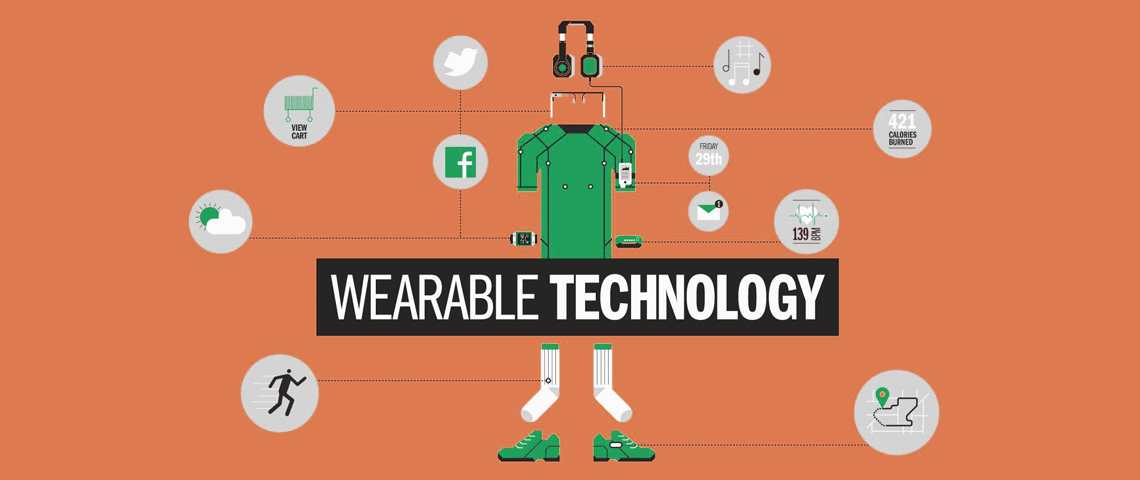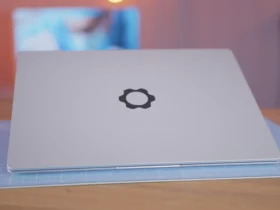IDTechEx expects wearable technology products to generate over £ 90 billion in revenue in 2021. Having covered this sector over the past decade, IDTechEx has developed an extensive database of historical and current market data, including coverage of 55 different sectors of products, estimates of revenues and sales volume for hundreds of companies and in every sector of wearable technology products. Each year, IDTechEx publishes updated market data series and forecasts for the wearable industry. The latest version can be found in IDTechEx’s main report on the topic “Wearable Technology Forecasts 2021-2031“, or throughout the rest of IDTechEx’s portfolio of reports covering each sector (AR, VR, MR, Hearables, Smart Clothing & E-textiles, Electronic Skin Patches, etc.)
The story of the big picture in all forecasts is consistent throughout. The wearable electronics market has grown significantly over this time period, keeping many of the central themes around health and wellness, style, comfort and practicality. The overall message about the benefit and potential of wearable products has been maintained over time.
Almost all major sections have grown to some extent, although the inflection points and growth rates are slightly different. Over this time, the number of product types that are evaluated within this forecast has increased from 35 to 55, including the separation of distinct areas such as hearables as they have matured. we have also seen sectors “other” products become more distinct, moving from generic terms such as “other wearables” to more specific sectors such as “wearable cameras” as overall confidence in each sector and esteem improves.
However, the projected market size for many of the key sectors, as well as the overall shape of growth differs quite significantly from the initial 5-year forecast. For example, while general projections for sales volume forecasts for smartwatches as an industry perform relatively well when put together, IDTechEx also expected the price per unit to drop, as they had seen with more basic fitness trackers. This has not happened, and the average selling prices of the smartwatches have remained high, keeping the total revenue strong. IDTechEx also initially predicted a trend that would see more devices become increasingly independent of the smartphone. This narrative has been around for a while, but many products and companies are recognizing that this is perhaps a longer-term project that some initially suggested.
The biggest discrepancy of all came in the hearables. In Q2 2016, hearables as a term had been coined, but the trend was largely limited to a couple of early startups and early prototypes. As such, the report at the time contained basic data for headphones and hearing aids, but little more. At the end of 2016, Apple launched the Airpods and achieved almost unprecedented success with this new type of product. Other vendors followed, and the entire industry has morphed to the point where TWS headphones are now the dominant product.
As this trend evolves, IDTechEx has updated its datasets, expanding hearing aid coverage to examine many more companies and device types, while also adding sections covering cochlear implants, different categories of wireless headphones, and more. . The report now also looks at the potential for disruption in the future, including impending changes in the hearing health industry as over-the-counter hearing health devices become more important.
The last largest section in the original forecast that shows a significant difference to the data is in augmented and virtual reality devices. This industry has been one of the hardest to predict, with billions of dollars in investment annually from the biggest players, and aspirational forecasts from other suppliers over time that are often astronomically high (often easily into the hundreds of billions of dollars). In this case, IDTechEx has always maintained a fairly conservative forecast; 2016 saw the launch of the first mainstream wave of consumer VR headsets (Oculus Rift, HTC Vive, PlayStation VR), but IDTechEx still predicted that initial uptake would be modest, predicting that it would take some time to develop content for this new format and that there were still many limitations with hardware platforms.
IDTechEx also saw AR go through the first wave of hype around Google Glass, which in 2016 was branded a “failure” by many. Fast forward to 2021 and the industry is still feeling relative infancy; billions have been invested over time. The momentum is now being driven by Meta, which has focused its entire corporate rebranding from Facebook on a vision of the future based on the metaverse. Other companies continue with varying levels of engagement, including bigger players like Microsoft, Sony, Alphabet, Snap, and others.
Just like in 2016, the community is still looking to Apple and speculating when they might launch something in this industry, hoping that this will help products take the final step towards more aggressive growth. As such, the narratives in the forecasts here are nearly identical to those of 2016, but come with the uncertainty of an industry that is powered by billions of dollars but is still trying to reach its inflection point.
Lessons from looking back
The forecast numbers are far from perfect, but in general the stories behind how growth will be achieved in each sector have held out. The collected values of each line tend to balance and the general outlook for the sector remains consistent. This time frame has included many new product launches by major players in new industries, a major global pandemic, and many other significant events that would change the direction of the forecast, so it’s hard to feel too disappointed with the deviation, but it’s also useful to look at the main lessons IDTechEx would have taken on board when looking back. Some ideas for these are as follows:
In the case of wearables, this could be rewritten as “the power of Apple”. In the past 5 years, Apple has launched two key products that have defined the wearable industry: the Apple Watch and Airpods. Each has transformed the industry of products they drive, and together they contribute to Apple’s 36% revenue share of the entire wearables space.
As much as a start-up can gain significant funding and momentum around a new type of product, the existing brand and infrastructure (from supply chain to retail stores, complementary devices, software and more) of the most big players have a huge impact on their ability to scale and maintain a new product. As such, significant pitches by larger players are far more likely to cause a change of pace in a market trajectory than almost any other driver. On its own, this is perhaps not surprising as a conclusion, but the extent to which this has been true for each product sector is the real lesson.
For example, in wearables in particular, perhaps the most difficult and significant challenge for any ongoing prediction is predicting Apple’s potential entry into VR / AR.
The ubiquity of the smartphone and its ability to communicate with other peripheral devices was the single biggest enabler for wearables. Wearables continue to benefit as part of the “smartphone war peacetime dividend,” where technology developed for the smartphone is still the basis of all wearables today.
Periodically, IDTechEx supplements predictions that predicted a decrease in smartphone dependency, and / or a shift in the center of gravity of personal computing from the smartphone to another type of device. Each of these predictions have been significantly premature, and despite the sales plateau, the importance of the smartphone as a personal node as part of an IT infrastructure cannot be underestimated. This may eventually change, but these predictions have shown that it is more likely to be over a period of decades rather than years.
Different technological areas in wearables have progressed at different rates over this 5-year period. In areas such as hearing aids, improvements in core technology around radio communication and energy have been critical to the creation and growth of that industry. In other industries such as AR and VR, the underlying technology around optics and displays has been discussed much longer and has seen much larger investments and advanced technically in many areas, but still remains in relative infancy. from a commercial point of view.
The lesson here is that technological development is not similar in terms of progress. Each different technology area has different trajectories, infrastructures and fundamental challenges with which it must work.
If the infrastructure is huge, well established, and has a clear focus on a key short-term development that will be critical to a new product (e.g., low-power, latency-managed radio communication for TWS headsets), then it can bring a significant change to the product landscape in a relatively short period of time. However, if the infrastructure is not as well established, or the key drivers behind the development of the technology are not well understood, or there are fundamental scientific barriers to development, then the technology will not progress so reliably, and long projections are needed. term with more uncertainty.
All predictions are built on assumptions, and each assumption varies in magnitude. In an industry like wearables, there are potentially hundreds of different product types ranging from …
















Leave a Reply
View Comments